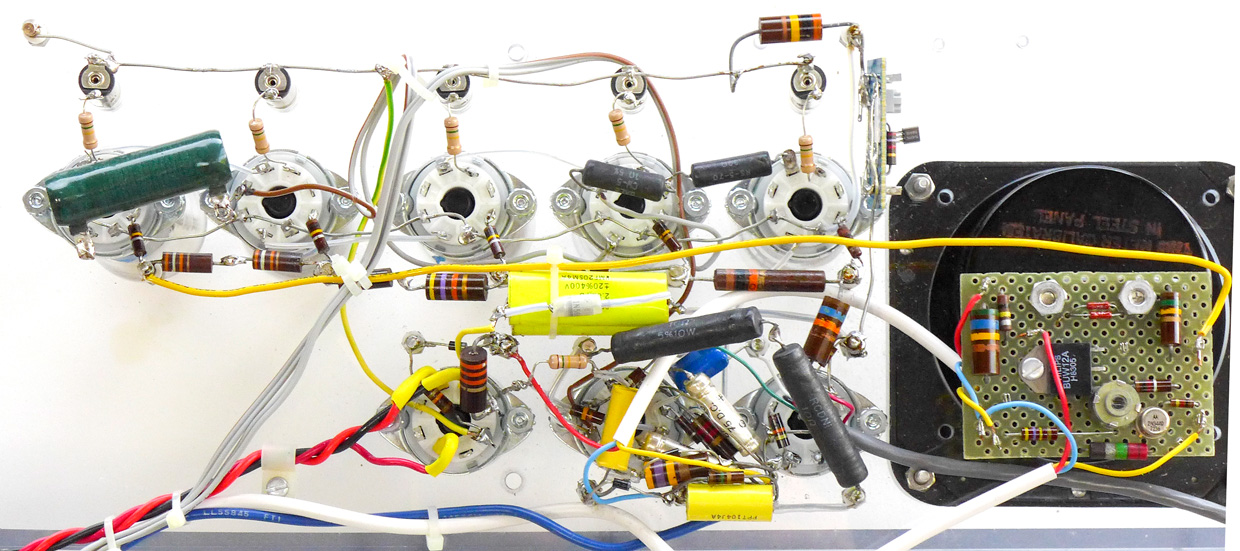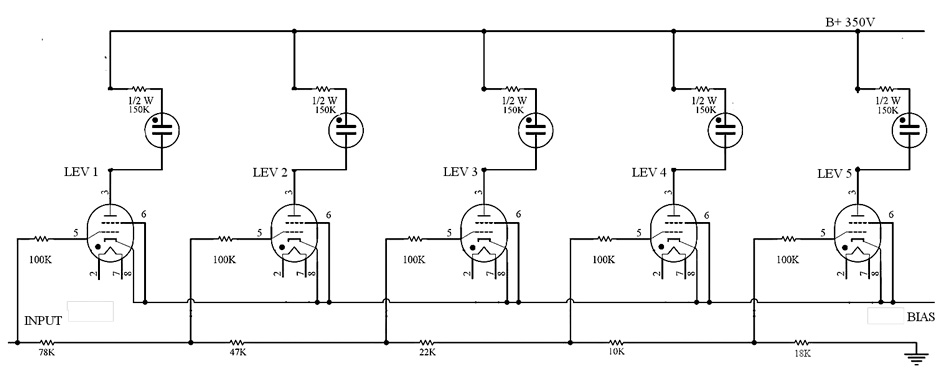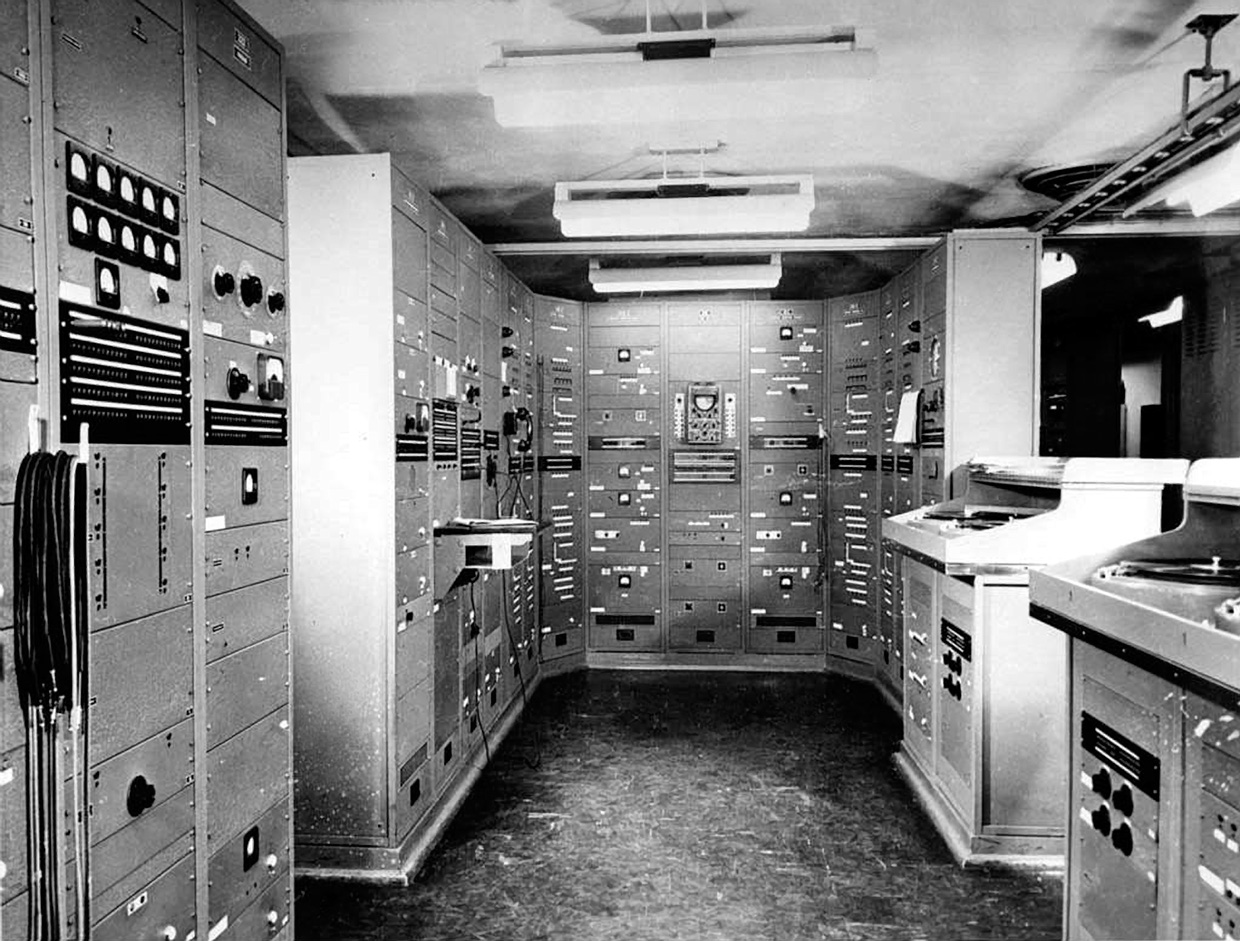Replication of the world's first digital voice scrambler
https://spectrum.ieee.org/geek-life/hands-on/rebuilding-a-piece-of-the-first-digital-voice-scrambler
- Transfer
This 1943 analog-to-digital converter provided radio communications that could not be decoded

Photo: Jon D. Paul
In the early 1940s, German intelligence could decode American radio communications, despite frequency scrambling. After Pearl Harbor, the development of an unbreakable speech scrambler became a top priority, and it was created in 1943. The device, called SIGSALY, first implemented many of the technologies that are critical for modern digital media, including a communication system with noise-like signals and the first use of code-pulse modulation (PCM) for voice transmission.
SIGSALY was a top secret project, so even today it is difficult to find information about its development. I spent twenty years studying the history of digital technology and digital media, especially SIGSALY, looking for IEEE and National Security Agency (NSA) magazines, as well as patents for Bell Telephone Laboratories. In the end, I managed to find Lieutenant Donald Mel, the SIGSALY technician operator during the Second World War, who provided invaluable assistance. In 2015, I realized that with the help of old parts I can recreate the key element of SIGSALY - the quantizer.
SIGSALY could not be hacked because, unlike previous analog systems, he scrambled his voice with a one-time random digital encryption key. Before using the digital key, you had to first convert the voice from analog to digital. This was done by the quantizer.
Modern analog-digital conversion makes it easy to capture the entire audio spectrum. Using the technologies available at the time, the creators of SIGSALY used 12 speech parameters for optimal encoding. Vocoders analyzed the voice and decomposed it into 10 frequency subbands, plus the pitch parameter and one bit “voiced / unvoiced voice”.
SIGSALY had 72 identical quantizers for digitizing 12 vocoder parameters and an encryption key (it was stored as noise on a vinyl record). The digitized voice and key are encrypted by addition modulo six . In each quantizer, five VT-109/2051 tiratrons worked. Thyratrons are a kind of electron tubes, but differ in that they react non-linearly: they are turned off until the voltage in the network exceeds a certain value; then the trigger is triggered and an arc is formed. The thyratron "clicks" and conducts electricity until the current from the anode drops to zero, dropping the thyratron. Five thyratrons form a parallel transducer in which the incoming signal is compared with the voltage at a number of tap points in the circuit. In SIGSALY, the analog voltage from the input is fed to a five-pin logarithmic voltage dividerwhose taps control the thyratron lattices. As the input voltage increases, the triggers of the five thyratrons successively trigger (producing not a binary, but a logarithmic "unary code"). These five outputs are sampled every 20 milliseconds to form a six-level quantized output (it is six, not five-level, because one level is zero).


Divide and conquer: in the heart of the converter lies the ladder of the voltage divider [pictured above and the scheme below], connected to thyratrons. In my replica I added neon indicators. Photo: Jon D. Paul
During the reconstruction of the SIGSALY quantizer, I wanted to make a really working device, which at the same time would be a wonderful museum exhibit. The design includes a 120/240 volt power supply, a microphone preamp, a sawtooth voltage generator, an analog-to-digital conversion shield and five neon lamps that highlight the logarithmic sequence. The first input is a dynamic microphone: it is connected to a preamplifier in which the 6SL7GT dual triode is installed to amplify the audio signal up to 60 decibels. Alternative input - slowly increasing sawtooth signal.
In my design, the same five-lead logarithmic ladder and the same type of thyratrons are used as in SIGSALY. Instead of the original sampling of values, every 20 ms I sample the input signal at the intersections of zero ac voltage.
Full details of the quantizer design will not fit into the pages of the [paper journal], but you can find it in the online application . One critical difference between thyratrons and their modern descendants - thyristors and triacs - is that in order to prevent damage, thyratron filaments should be preheated before applying anode voltage. The thermostat gives the threads 15 seconds to warm up.
Some details for the quantizer were found in my laboratory, where I have been collecting vintage electronics since the 1950s. Original VT-109/2051 tiratrons and eight-pin porcelain lamp holders were sold on eBay. In addition, the device used other components of the 40s (for example, Allen-Bradley volume resistors), as well as some modern parts (for example, dual power transformers) to support electronics, which are absent in the original quantizer. To make the components visible, I made a transparent plastic case 49 × 17 × 8 cm for the quantizer. The total cost of the components was $ 1,250.

The SIGSALY voice scrambler entirely is a giant machine that employs many analog-to-digital converters. Photo: NSA
The design and construction took more than three years, and debugging was very difficult, especially at 350 volts! I finished the build and started debugging just one hour before departure from California to Paris, where I promised to demonstrate the quantizer at several conferences on cryptography and information security. When I added power resistors to solve some incandescent voltage problems and corrected a few wiring errors, the quantizer began to work a little, but only two of the five thyratrons worked, the microphone preamplifier showed full-scale oscillations once a second ( "motorboat" in electronics), and the anode power supply was seriously overloaded when each thyratron was triggered.
I had to stop debugging and leave. I packed a quantizer with several tools and spare parts, and Air France kindly agreed to use such a fragile machine using a special protocol. In Paris, I had to complete debugging without a laboratory and instruments, except for a voltmeter. I got parts and tools in the flea markets in Paris (Marché aux Puces) and finally finished debugging in an old friend's radio amateur! Many problems arose because the thyratrons differed significantly in the voltage triggers of the network (the same problems with the inconsistency of the thyratrons were solved by engineers and technicians of the original SIGSALY in the 40s).
The author demonstrates his replica of the innovative SIGSALY converter.
Now the unit works reliably. According to the NSA and the curators of the National Cryptological Museum, this is the first attempt to recreate any fragment of SIGSALY. But the most remarkable thing is that this device is equally impressive for both young people and older people. Both technical and non-technical audiences immediately understand the underlying principles and close ties with the modern digital age.
Additional Information
If you want to read about how SIGSALY innovations shaped modern multimedia and telecommunications technologies, in 2006 I wrote an article [PDF] for the Society of Sound Engineers, and in 2014 I published an article in the Journal of the Society of Film and Television Engineers. For more information on the reasons for the creation and the work of SIGSALY during World War II, see the introductory historical article from the NSA.
If you prefer to listen rather than read, in 2016 my colleagues and I told about vocoders and SIGSALY in the 99% Invisible podcast .
